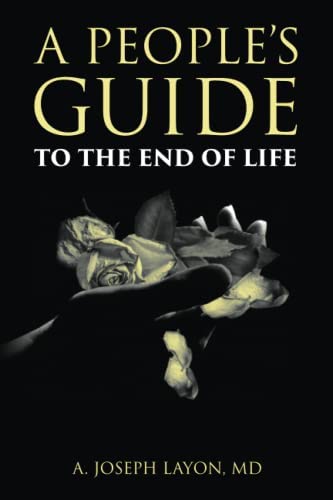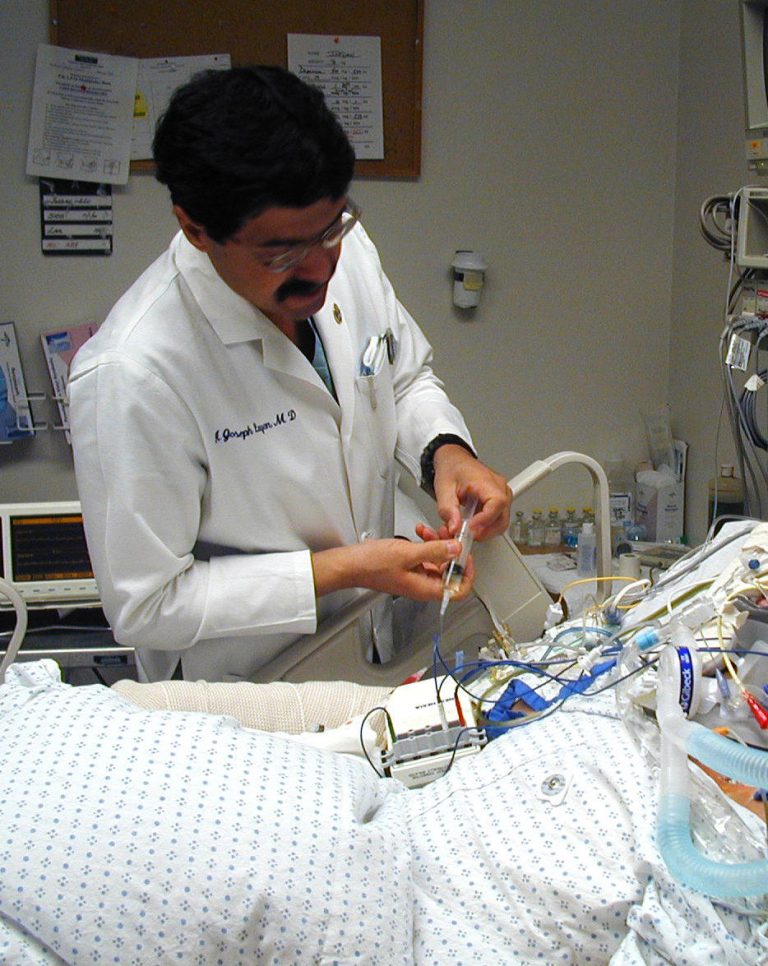A New Book by Dr. Joseph Layon Empowers Women in Supporting Loved Ones During Illness
A.Joseph Layon, M.D., boasts a distinguished career spanning over 35 years as a prominent intensive care physician. His expertise encompasses a wide spectrum of medical disciplines, including internal medicine, anesthesiology, critical care, and neurocritical care. Throughout his professional journey, Dr. Layon has worn multiple hats, functioning as a clinician, an educator, an investigator, a division and department chair, a Faculty Senate Chairman, and a Medical School Financial troubleshooter.
Aside from his distinguished career, Dr. Layon is the author of the book “A People’s Guide to End of Life.” This enlightening publication is a heartfelt commitment to aiding families dealing with the challenges of end-of-life scenarios and assisting individuals as they navigate the complex and sometimes inefficient healthcare system. It stands as an invaluable addition to any household’s library, equipping them with the tools needed to effectively advocate for their loved ones during critical times such as ICU or hospice care situations.

1. Layon, what inspired you to write “A People’s Guide to End of Life?
For the past 43 years I have been thinking about death and dying. I have cared for, in the course of my medical practice in the intensive care unit (ICU) – surgical, trauma, and burn ICUs, primarily – thousands of very ill fellow humans of whom some small percentage – 4% to 6% – have died.
I was present at the beginning of the three great pandemics/epidemics of our time: HIV/AIDS, Ebola, and SARS-CoV-2. Of these, the most jarring, the most disturbing was the latter. This due to the number of deaths, the unnecessary deaths, and the gross weaponization of misinformation related to the infection, and its treatments. I presided over the deaths of more of our fellow humans during this third pandemic than I ever had previously. Even working with Médecins sans Frontières (Doctors without Borders) in a zone of conflict in Nigeria, there weren’t as many deaths.
During a normal life, of course, I have watched members of my family become ill and die: My father, my younger sister, my mother, uncles and aunts, friends. And I know that one day, it will be me in that bed, dying.
I have not been impressed, for the most part, by the way we in medicine deal with death and dying. So, thinking and reading about this over the years, I tried to come up with a systematic approach to the process of death. A People’s Guide to End of Life is the result.
The specific reason, though, was to try to be of service to my brothers and sisters, here and abroad. Although the culture of death is different in different countries, there are enough similarities that, I think, this volume might be useful to people from other cultures.
2: In many cases, women are the caregivers for loved ones who are in the ICU or Hospice.
- How can they manage the emotional toll of being the primary caregiver for a loved one in the ICU, and what strategies do you suggest to maintain their own well-being during this challenging time juggling family and work?
Death and dying are not gendered, although the response and social expectations are. The emotional toll time in the ICU/the dying process can take is significant.
The best way to think of this process is from a running perspective. Having a loved one in the ICU – whether they are expected to get better or not – may be considered a marathon, not a sprint. The primary caregiver and her family may want to be present around the clock; they don’t want to miss anything and, especially, they do not want their loved one to be alone if they wake up or if they die. But how do you do this without becoming so fatigued that you can no longer function?
This may be handled in several ways. At the beginning of the hospitalization, the family needs decide who the point of contact (POC) person will be. This person, and perhaps a surrogate if the POC is unavailable, will be the individuals with whom the nurses and physicians will contact. The POC must be a person who is trusted and reliable; a family member, a very close friend, etc. Next, based upon work and family schedules, the members of the family will need to create a schedule so that, in rotation, one member of the family is present daily. The rotating person should be in the ICU, if possible, during the time interdisciplinary rounds are performed so that they may be present to hear the plans and ask questions. The information thus garnered will be fed to the POC who will disseminate it to the rest of the family. Additionally, the POC will be the person that the ICU team will contact if there is need for a procedural consent or when a problem ensues. Further, if the family members have questions, they should flow through the POC.
All of this allows time for the family to care for itself while providing the health care team with the POC, with whom contact may be made.
- As a woman providing care in the hospital setting, what specific resources or support networks offer assistance and understanding unique to the experiences of female caregivers?
Many, not all, hospitals have Patient-Family centered support programs. The family member should ask the Patient Representative or the Unit Social Worker for information about assistance/support networks. The family member may, after the hospitalization if over, stay involved to assist others.
- Women often face unique expectations and pressures when caring for loved ones in the hospital. How do you address societal or cultural expectations while prioritizing your own needs and those of the patient?
The primary function of the health care team is the provision of high quality, patient and family centered care to the sick human who has come to us for help. There are social and cultural expectations that, occasionally, cause metaphorical “bumps in the road”. Most often, however, these can be handled with active listening to the sick person or their family. Active listening involves having the time to sit with – not stand above – the Patient/Family member, making eye contact, letting the person speak without interruption, and giving the person time to respond with appropriate silent pauses. Almost always, this mechanism works. When it doesn’t, the health care team will seek out another person who might be able to serve as an interface with the Patient/family, and who is culturally/socially closer to the family than is the health care team.
2. Communication with healthcare professionals is crucial in the ICU setting.
- What are your tips for women to have discussions with medical staff, and what advice would you give to women caregivers in terms of advocating for their loved ones and staying informed about their medical care?
One of the most important things a family/Patient can do is to designate a POC with whom the healthcare team can contact. It is a reasonable expectation that the bedside RN or one of the members of the healthcare team would communicate with the POC on a daily basis.
The POC might consider keeping a journal of questions she has along with the answers she obtains from the Healthcare Team.

- Are there any “red flags” women should look for when caring for a loved one in the ICU or Hospice?
Not exactly “red flags”, but this is difficult. Our health system is fraught with quality and safety problems. It is extremely expensive.
My answer, for the long term, if you will need hospitalization one day – and you will – is to work with groups such as Physicians for a National Health Program for a Medicare for All type program.
The short-term answer is that it is not the number of restaurants or water-falls the hospital has, but the quality of the people inside: nurses, physicians, pharmacists, and so forth. There is no easy way to determine which place is the best, so I would say: before you need hospitalization, make sure you go to a University/Teaching institution if you can. Look up the rankings of the institution (LeapFrog and CMS Star Rating) you have to choose from. None of these are fail-safe, but they are tools to get you close to a satisfactory answer.
- How do they discuss an imminent passing with their loved one?
How do we comfort our loved ones as they die? We come into, and exit, this world alone. Yes, we are surrounded by others, but we are, indeed, alone. The most appropriate way to comfort a family member as they become ill and are dying is to have had a loving relationship with him/her prior to the time that they became ill. It is those memories, as well as ones perhaps not so pleasant, that the dying individual will reexamine as they prepare to leave our world. More than that, while the patient is in the ICU or hospice, you can sit with your loved one, hold their hand, read to them, tell them you love them; simply be present. It is difficult, and painful, to be with a very ill or dying person continuously, so the family may wish, if they have the ability and as mentioned above, to switch off family members who will sit with their loved one for several hours at a time. Research we have carried out suggested that even heavily sedated patients seem to respond, to some extent, to being talked or read to. So, the family member may want to carry on a one-sided conversation with their loved one, or read them a novel, or the newspaper, or their religious book.
The family left behind when a loved one dies will need comforting, as well. While this, to some extent, varies culturally, a post-death event – perhaps after burial or cremation – that revisits the patient’s life, with those that they loved in attendance, may be appropriate and may ease the pain. It’s impossible to make this event painless, but it is possible to make it easier. And although the pain will never go away, it will become less sharp over the years; so that one day, when you think of the loved one, now gone, you will smile rather than cry.
It is not uncommon – and it is acceptable – to have a sense of guilt or even resentment at having to care for a dying parent or loved one. When death approaches, the pathologies of a relationship may come out. However, as long as there is life, the relationship may be repaired.
- What are your top three takeaways from the book that readers will learn?
- We should talk with our loved ones about our wishes if we were to become very ill – each of us will die, after all – before we fall sick. Doing this does not mean one cannot change one’s mind. Nor will discussing these issues “make them happen”. In fact, it may make everyone involved more at ease as there is clarity.
- Each of us should have someone who can speak for us if we become very ill and can no longer speak for ourselves. This is termed a health care surrogate.
- When a loved one becomes ill, ensure that there is one or two of you who are the designated “communicators”. This is a person (persons) who will carry the family’s questions to the health care team and bring the answers back to the family. The health care team cannot answer the same questions over and over to different members of the family. This is why it matters that someone – or someone’s – are designated the spokespeople.
You can learn more about Dr. Layon and his book by visiting his website:
The book is available at Amazon:
Twitter: @ajosephylayonmd
